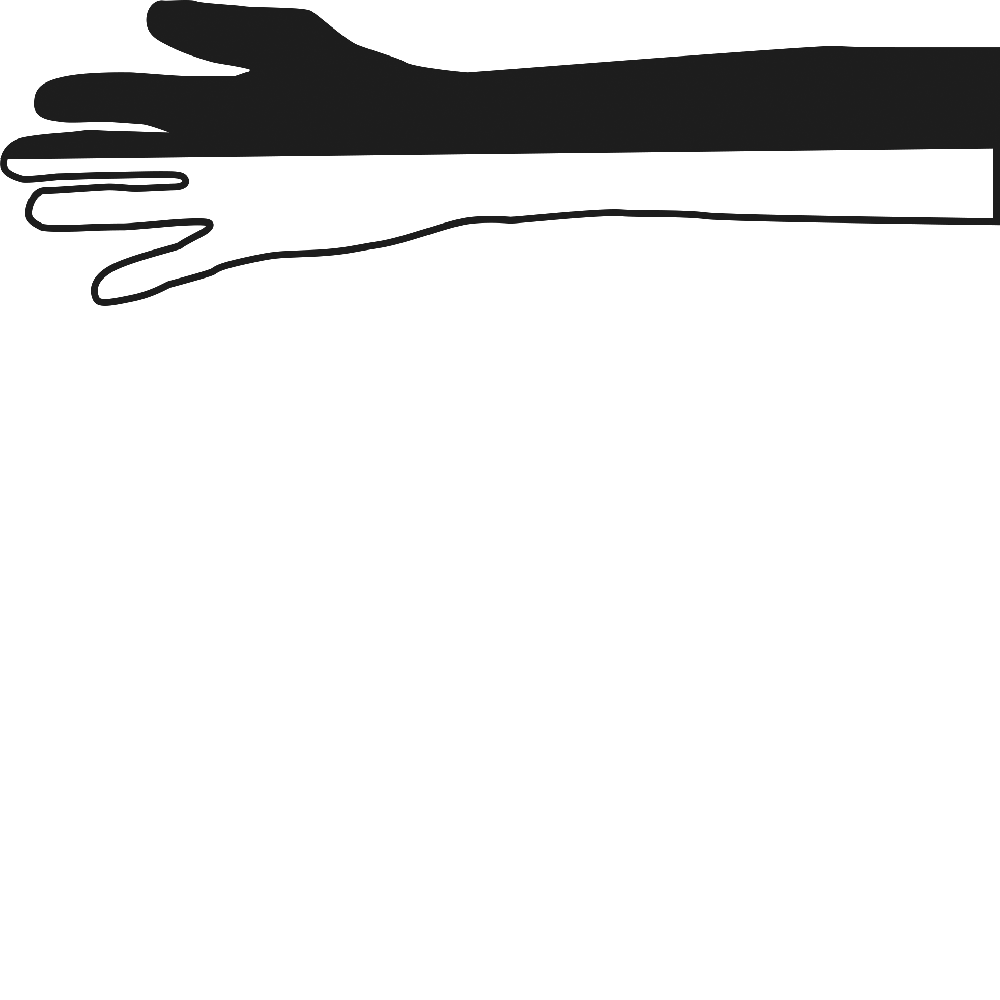New legislation in a number of U.S. states requires mental-health professionals to assess their patients for the potential to commit gun crimes. For instance, New York state law mandates that mental-health professionals report anyone who “is likely to engage in conduct that would result in serious harm to self or others” to the state’s Division of Criminal Justice Services, which then alerts the local authorities to revoke the person’s firearms license and confiscate their weapons.1 Similarly, a recently passed bill in Tennessee requires mental-health professionals to report “threatening patients” to local law enforcement.2
Supporters of these laws argue that they provide important tools for law enforcement officials to identify potentially violent persons, and perhaps understandably so. U.S. policymakers and the general public look to psychiatry, psychology, neuroscience, and related disciplines as sources of certainty in the face of the often incomprehensible terror and loss that gun violence inevitably produces. And undeniably, persons with mental illness who have shown violent tendencies should not have access to weapons that could be used to harm themselves or others.3
However, the notion that psychiatric attention might prevent gun crime is more complicated than it might seem. New research done by myself and my colleague, Professor Ken MacLeish, warns of the potential pitfalls of such laws if they are unaccompanied by other community based and gun-focused interventions.4 We systematically review key literatures from fields including psychiatry, psychology, public health, and sociology that address connections between mental illness and gun violence between 1960 and 2014. We also call upon our own primary source historical research on violence, and mental illness5, and American gun culture.6 7 8
From this review we critically address three central assumptions that underlie many U.S. political and popular associations between gun violence and mental illness:
- 1. that mental illness causes gun violence;
- 2. that psychiatric diagnosis can predict gun crime before it happens;
- 3. that U.S. mass-shootings teach us to fear mentally ill loners;
Each of these statements is certainly true in particular instances.9 At the same time, our research shows how these seemingly self-evident assumptions are replete with complicated and at times contradictory assumptions. At the aggregate level, the notion that mental illness causes gun violence stereotypes a diverse population of persons diagnosed with psychiatric conditions and oversimplifies links between violence and mental illness. Moreover, notions of mental illness that emerge in relation to gun violence frequently reflect larger cultural issues that become obscured when mass shootings come to stand in for all gun crime and when “mentally ill” ceases to be a medical designation and becomes a sign of violent threat.
We also show how anxieties about insanity and gun violence are imbued with oft-unspoken anxieties about race, politics, and the unequal distribution of violence in American society. In the current American political landscape, these tensions play out most clearly in the discourse surrounding controversial “stand-your-ground” laws.10 Our analysis suggests that similar, if less overt historical tensions suffuse discourses linking guns and mental illness in ways that subtly connect “insane” gun crimes with oft-unspoken assumptions about “white” individualism or “black” communal aggression.
Ultimately, our research challenges psychiatry to think deeply about potentially untenable situations in which mental-health practitioners become the persons most empowered to make decisions about gun ownership and most liable for failures to predict gun violence – if these situations are not accompanied by larger reforms that address the social, structural, and indeed psychological implications of gun violence in the United States.
1. Mental illness causes gun violence
The focus on mental illness in the wake of recent mass shootings in the U.S. reflects a decades-long history of psychiatric and legal debates about guns, gun violence and “mental competence.” Psychiatric articles in the 1960s deliberated ways to assess whether mental patients were “of sound mind enough” to possess firearms.11 After the 2012 shooting at Newtown, psychiatrist E. Fuller Torrey claimed that “about half of…mass killings are being done by people with severe mental illness, mostly schizophrenia, and if they were being treated they would have been preventable.”12
Yet surprisingly little population-level evidence supports the notion that individuals diagnosed with mental illness are more likely than anyone else to commit gun crimes. According to psychiatrist Paul Appelbaum13, less than 3–5% of American crimes involve people with mental illness, and the percentages of crimes that involve guns are lower than the national average for persons not diagnosed with mental illness. Databases that track gun homicides, such as the National Center for Health Statistics, similarly show that fewer than 5% of the 120,000 gun-related killings in the U.S. between 2001 and 2010 were perpetrated by people diagnosed with mental illness.14
Moreover, a growing body of research suggests that mass shootings represent anecdotal distortions of, rather than representations of, the actions of “mentally ill” people as an aggregate group. By most estimates, there were fewer than 100 mass shootings reported in the United States – defined as crimes “when four or more people are shot in an event, or related series of events” – between 1982 and 2012.15 Rates of reported mass shootings then rose in 2013 and 2014.16 Scholars who study violence prevention thus contend that mass-shootings occur far too infrequently to allow for the statistical modeling and predictability – factors that lie at the heart of effective public-health interventions. Psychologist Jeffrey Swanson argues that mass shootings denote “rare acts of violence”17 that have little predictive or preventive validity in relation to the bigger picture of the 32,000 fatalities and 74,000 injuries caused on average by gun violence and gun suicide each year in the United States.18
Media reports often assume a binary between mild and severe mental illness, and connect the latter form to unpredictability and lack of self-control. However, this distinction, too, is called into question by mental-health research. To be sure, a number of the most common psychiatric diagnoses, including depressive, anxiety, and attention-deficit disorders, have no correlation with violence whatsoever.19 Community studies find that serious mental illness without substance abuse is also “statistically unrelated” to community violence.20 At the aggregate level, the vast majority of people diagnosed with psychiatric disorders do not commit violent acts – only about 4 percent of violence in the United States can be attributed to people diagnosed with mental illness.21
This is not to suggest that researchers know nothing about predictive factors for gun violence. However, credible studies suggest that a number of risk factors more strongly correlate with gun violence than mental illness alone. For instance, alcohol and drug use increase the risk of violent crime by as much as seven-fold, even among persons with no history of mental illness.22 According to Van Dorn, a history of childhood abuse, binge drinking, and male gender are all predictive risk factors for serious violence.23 Miller and colleagues found that homicide was more common in areas where household firearms ownership was higher.24 Availability of guns is also considered a more predictive factor than is psychiatric diagnosis in many of the 19,000 American completed gun suicides each year.25
Again, certain persons with mental illness undoubtedly commit violent acts. Yet growing evidence suggests that mass shootings represent statistical aberrations that reveal more about particularly horrible instances than they do about population-level events. To use Swanson’s phrasing, basing gun-crime-prevention efforts on the mental health histories of mass shooters risks building “common evidence” from “uncommon things.” Such an approach thereby loses the opportunity to build common evidence from common things – such as the types of evidence that clinicians of many medical specialties might catalogue about substance abuse, domestic violence, availability of firearms, suicidality, social networks, economic stress, and other factors.
2. Psychiatric diagnosis can predict gun crime before it happens
Again, legislation in a number of states now mandates that psychiatrists assess their patients for the potential to commit violent gun crime. History suggests, however, that psychiatrists are inefficient gatekeepers in this regard. Data supporting the predictive value of psychiatric diagnosis in matters of gun violence is thin at best. Psychiatric diagnosis is largely an observational tool, not an extrapolative one. Largely for this reason, research dating back to the 1970s suggests that psychiatrists using clinical judgment have difficulty predicting which individual patients will commit violent crimes and which will not.26
The lack of prognostic specificity is in large part a matter of simple math. Psychiatric diagnosis is in-and-of-itself not predictive of violence, and even the overwhelming majority of psychiatric patients do not commit crimes.27 28
In this sense, population-based literature on guns and mental illness suggests that legislatures risk drawing the wrong lessons from gun crimes and mass shootings if their responses focus on asking psychiatrists to predict future events. Though rooted in valid concerns about public safety, legislation that expands mental-health criteria for revoking gun rights puts psychiatrists in potentially untenable positions, not because they are poor judges of character, but because the urgent political and social conditions psychiatrists are asked to diagnose are at times at odds with the capabilities of their diagnostic tools and prognostic technologies.
3. Look out for dangerous loners
Mass shootings in the US are often framed as the work of loners – unstable, angry white men who never should have had access to firearms.29 And to be sure, a number of other recent shooters undoubtedly led troubled, solitary lives. It is important to note, however that the seemingly self-evident images of the mentally disturbed, gun obsessed, white male loner are relatively recent phenomena.30 In the 1960s and 1970s, by contrast, many of the men labeled as violent and mentally ill were also, it turned out, African American. And, when the potential assailants were black, American psychiatric and popular culture frequently blamed “black culture” or black activist politics31 – not individual, lone “shooters” – for the threats such men were imagined to pose.32
For instance, anxieties about race and politics shaped many 1960s-era American political associations between schizophrenia and gun violence. FBI profilers spuriously diagnosed many “pro-gun” black political leaders with militant forms of schizophrenia as a way of highlighting the insanity of their political activism. According to declassified documents, the FBI diagnosed Malcolm X with “pre-psychotic paranoid schizophrenia” while highlighting his attempts to obtain firearms.33 The FBI also diagnosed Robert Williams, the head of the Monroe, North Carolina chapter of the NAACP, as schizophrenic, armed, and dangerous during his flight from trumped-up kidnapping charges in the early 1960s.34 Malcolm X, Robert Williams, and other leaders of African-American political groups were far from schizophrenic. But fears about their political sentiments, guns, and sanity mobilized substantial response.
During this same era, U.S. psychiatry often spoke out in favor of gun control – articles in the American Journal of Psychiatry urged psychiatrists to address “the urgent social issue” of firearms in response to “the threat of civil disorder.”35
Recent history thus suggests that cultural politics underlie anxieties about whether guns and mental illness are thought to represent individual or communal etiologies. In the 1960s and 1970s, widespread concerns about black “cultural”36 and political violence fomented calls for widespread reforms in gun ownership. As this played out, politicians, FBI profilers, and psychiatric authors argued for the right to use mental-health criteria to limit gun access. However in the present day, the actions of “lone” white male shooters go hand-in-hand with calls to limit guns rights just for the severely mentally ill. Indeed it would seem political suicide for a legislator or doctor37 to hint at restricting the gun rights for white Americans, private citizens, or men, even though these groups are frequently linked to high-profile mass shootings.
Conclusion
Questioning the associations between guns and mental illness in no way detracts from the dire need to stem gun crime. Yet as the fractious U.S. debate about gun rights plays out, it seems incumbent to find common ground beyond assumptions about whether particular assailants meet criteria for specific illnesses, or whether mental-health experts can predict violence before it occurs. Of course, understanding a person’s mental state is vital to understanding their actions. At the same time, focusing legislative policy and popular discourse so centrally on mental illness is rife with potential problems if, as seems increasingly the case, those policies are not embedded in larger societal strategies and structural-level interventions.
As such, agendas that hold mental-health workers accountable for identifying dangerous assailants puts these workers in potentially untenable positions because the legal duties they are asked to perform misalign with the predictive value of their expertise. In this sense, instead of accepting the expanded authority provided by current gun legislation, mental-health workers and organizations might be better served by identifying and promoting areas of common cause between clinic and community, or between the social and psychological dimensions of gun violence.38 Connections between loaded handguns and alcohol, the mental-health effects of gun violence in low-income communities, or the relationships between gun violence and family, social, or socioeconomic networks are but a few of the topics in which mental-health expertise might productively join community and legislative discourses to promote more effective medical and moral arguments for sensible gun policy than currently arise amongst the partisan rancor.
Put another way, perhaps psychiatric expertise might be put to better use by enhancing U.S. understandings of the complex anxieties, social and economic formations, and blind assumptions that make people fear each other in the first place. Psychiatry could help society interrogate what guns mean to everyday people, and why people feel they need guns or reject guns out-of-hand. By addressing gun discord as symptomatic of deeper concerns, psychiatry could, ideally, promote more meaningful public conversations on the impact of guns on civic life. And it could join with public-health researchers, community activists, law enforcement officers, or business leaders to identify and address the underlying structural39 and infrastructural40 issues that foster real or imagined notions of mortal fear.
February 2015
References (Endnotes)
- Kaplan T, Hakim D. New York Lawmakers Reach Deal on New Gun Curbs. The New York Times, sec. N.Y. / Region. January 14, 2013. Accessed July 23, 2014.↩
- Sher A. Tennessee Senate OK’s Bill That Requires Mental Health Professionals to Report Threats. Timesfreepress.com. March 21, 2013. Accessed July 23, 2014.↩
- Luo M, Mcintire M. When the Right to Bear Arms Includes the Mentally Ill. The New York Times, sec. U.S. December 21, 2013. Accessed July 23, 2014.↩
- Jonathan M. Metzl and Kenneth T. MacLeish. (2014). Mental Illness, Mass Shootings, and the Politics of American Firearms. American Journal of Public Health. doi:10.2105/AJPH.2014.302242. ↩
- Metzl JM. The Protest Psychosis: How Schizophrenia Became a Black Disease. Boston: Beacon Press; 2010.↩
- MacLeish KT. Making War at Fort Hood: Life and Uncertainty in a Military Community. Princeton, NJ: Princeton University Press; 2013.↩
- Metzl JM. Why Are the Mentally Ill Still Bearing Arms? The Lancet. 2011; 377 (9784), 2172–73. doi:10.1016/S0140-6736(11)60950-1.↩
- Metzl JM, MacLeish KT. Triggering the Debate: Faulty Associations Between Violence and Mental Illness Underlie U.S. Gun Control Efforts. Risk and Regulation 2013; 25: 8-10.↩
- Guns, Public Health and Mental Illness: An Evidence-Based Approach for State Policy. 2013. Consortium for Risk-Based Firearm Policy.↩
- O’Mara M. It’s Not about ‘Stand Your Ground, It’s about Race. CNN. February 19, 2014. Accessed July 23, 2014.↩
- Rotenberg LA, Sadoff RL.“Who Should Have a Gun? Some Preliminary Psychiatric Thoughts.” American Journal of Psychiatry. 1968: 125 (6), 841–43.↩
- Imminent Danger. 60 Minutes. CBS. 2010. Accessed July 23, 2014.↩
- Appelbaum P. Violence and Mental Disorders: Data and Public Policy. American Journal of Psychiatry, 2006; 163 (8): 1319–21. doi:10.1176/appi.ajp.163.8.1319.↩
- Leading Causes of Death Reports, National and Regional 1999-2010. CDC. February 19, 2013. Accessed July 23, 2014.↩
- Follman M, Aronsen G, Pan D. A Guide to Mass Shootings in America. Mother Jones. May 24, 2014. Accessed July 20, 2014.↩
- Mass Shooting Tracker. Accessed July 20, 2014.↩
- Swanson JW. Explaining Rare Acts of Violence: The Limits of Evidence from Population Research. Psychiatric Services (Washington, D.C.), 2011; 62 (11): 1369–71. doi:10.1176/appi.ps.62.11.1369.↩
- Firearm Injury In The U.S. Firearm & Injury Center at Penn. 2009. Accessed July 23, 2014.↩
- Guns, Public Health and Mental Illness: An Evidence-Based Approach for State Policy. 2013. Consortium for Risk-Based Firearm Policy.↩
- Elbogen EB, Johnson SC. The Intricate Link between Violence and Mental Disorder: Results from the National Epidemiologic Survey on Alcohol and Related Conditions. Archives of General Psychiatry. 2007; 66 (2): 152–61. doi:10.1001/archgenpsychiatry.2008.537. ↩
- Fazel S, Grann M. The Population Impact of Severe Mental Illness on Violent Crime. American Journal of Psychiatry. 2006; 163 (8): 1397–1403. doi:10.1176/appi.ajp.163.8.1397.↩
- Brammer J. Kentucky Senate Approves Bill Allowing Concealed Guns in Bars If Owner Doesn’t Drink. Kentucky.com. February 20, 2014. Accessed July 23, 2014. ↩
- Van Dorn R, Volavka J, Johnson N. Mental Disorder and Violence: Is There a Relationship beyond Substance Use? Social Psychiatry and Psychiatric Epidemiology. 2012; 47 (3): 487–503. doi:10.1007/s00127-011-0356-x.↩
- Miller M, Azrael D, Hemenway D. Rates of Household Firearm Ownership and Homicide Across US Regions and States, 1988-1997. American Journal of Public Health. 2002; 92 (12): 1988–93.↩
- Lewiecki EM, Miller SA. Suicide, Guns, and Public Policy. American Journal of Public Health: January 2013;103 (1): 27-31. doi: 10.2105/AJPH.2012.300964.↩
- Steadman H, Cocozza J. Psychiatry, Dangerousness and the Repetitively Violent Offender. Journal of Criminal Law and Criminology. 1978; 69 (2): 226.↩
- Monahan J , Steadman H, Silver E, et al. Rethinking Risk Assessment: The MacArthur Study of Mental Disorder and Violence. New York: Oxford University Press; 2001.↩
- Grady D. Signs May Be Evident in Hindsight, but Predicting Violent Behavior Is Tough. The New York Times, sec. U.S. September 18, 2013. Accessed July 23, 2014.↩
- Metzl JM. When shootings happen, gender has to be part of the conversation. MSNBC. Accessed July 20, 2014.↩
- Kennedy-Kollar D, Charles CAD. Hegemonic Masculinity and Mass Murderers in the United States. Southwest Journal of Criminal Justice. 2013; 8(2).↩
- Bromberg W, Simon F. The ‘Protest’ Psychosis: A Special Type of Reactive Psychosis. Archives of General Psychiatry. 1968; 19 (2): 155–60. doi:10.1001/archpsyc.1968.01740080027005.↩
- Metzl JM. The Protest Psychosis: How Schizophrenia Became a Black Disease. Boston: Beacon Press; 2010.↩
- Metzl. 2010: 230 n.34.↩
- “FBI Hunts NAACP Leader,” New York Amsterdam News, Sep 23, 1961, 1.↩
- Rotenberg LA, Sadoff RL. Who Should Have a Gun? Some Preliminary Psychiatric Thoughts. American Journal of Psychiatry 125 (6): 841–43.↩
- Brody EB. Social Conflict and Schizophrenic Behavior in Young Adult Negro Males. Psychiatry: Journal for the Study of Interpersonal Processes 1961; 24 (4): 337–46; 343.↩
- Peters JW. Senate Balks at Obama Pick for Surgeon General. The New York Times. March 14, 2014. Accessed July 23, 2014.↩
- Hiday V. The Social Context of Mental Illness and Violence. Journal of Health and Social Behavior. 1995; 36 (2): 122-137.↩
- Metzl JM, Hansen HH. Structural Competency: theorizing a new medical engagement with stigma and inequality. Social Science & Medicine 2014; 103: 126-133. Accessed July 23, 2014.↩
- Lavinghouze SR, Snyder K, Rieker PP. The Component Model of Infrastructure: A Practical Approach to Understanding Public Health Program Infrastructure. American Journal of Public Health. August 2014;104 (8); 14-24.doi: 10.2105/AJPH.2014.302033. ↩



